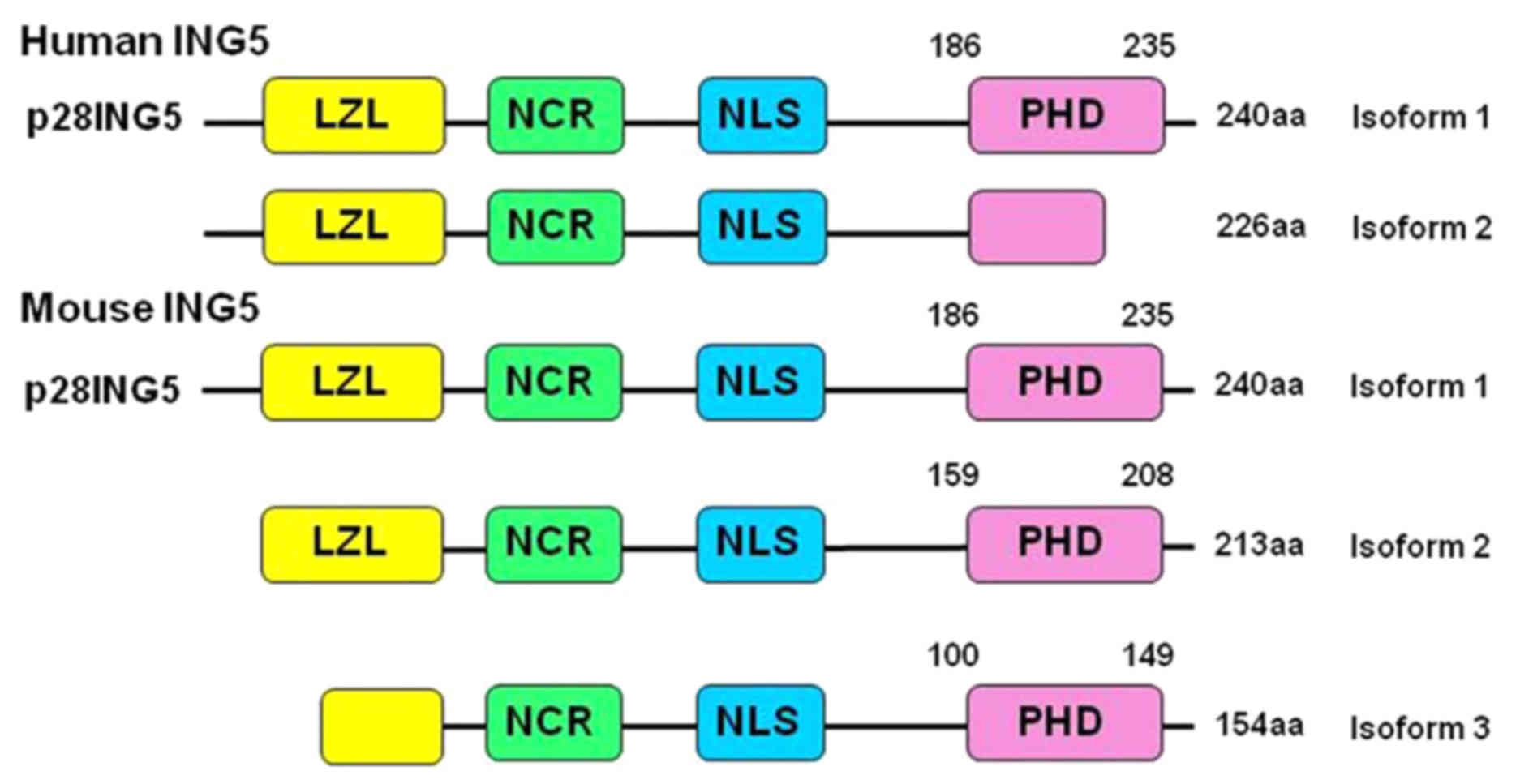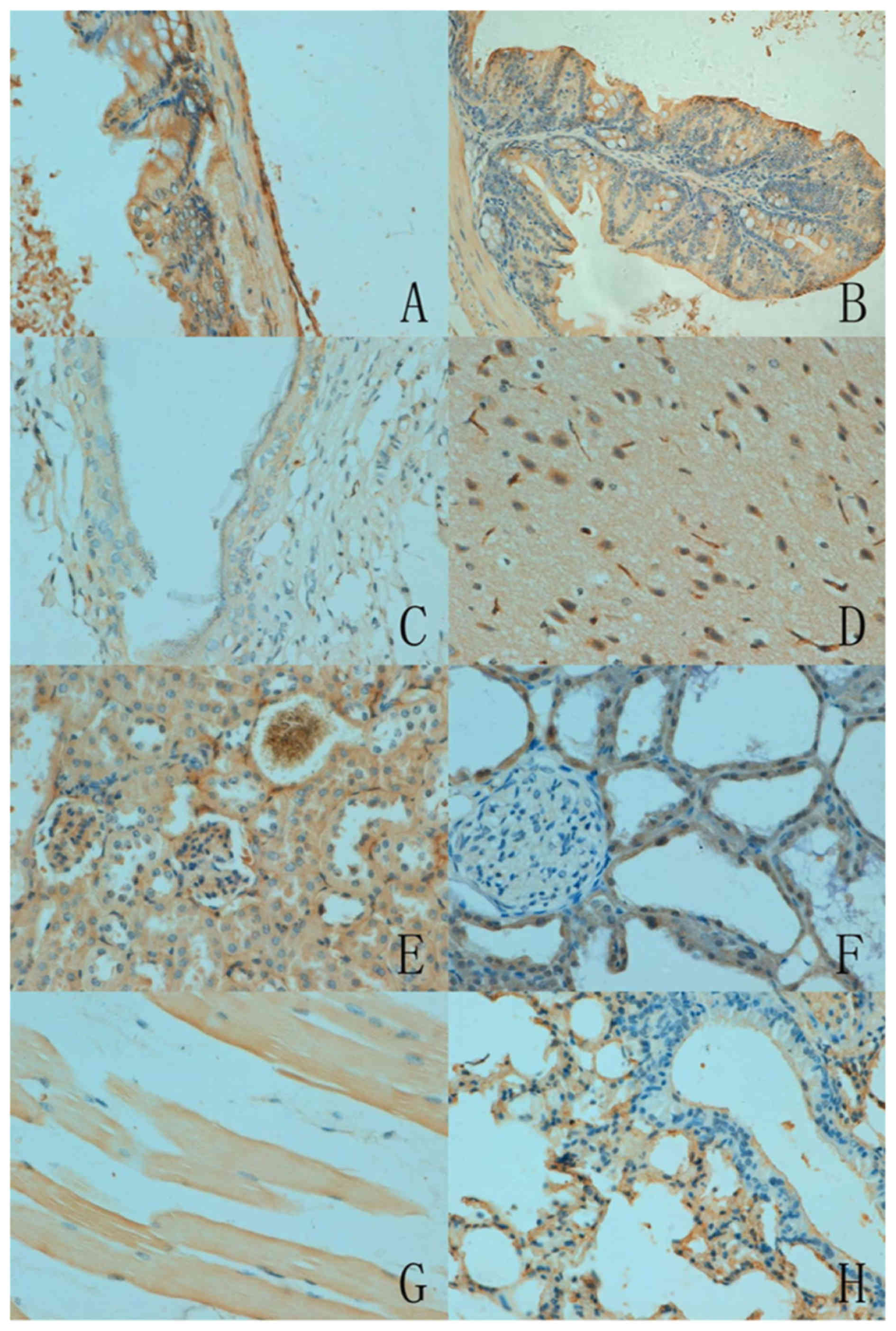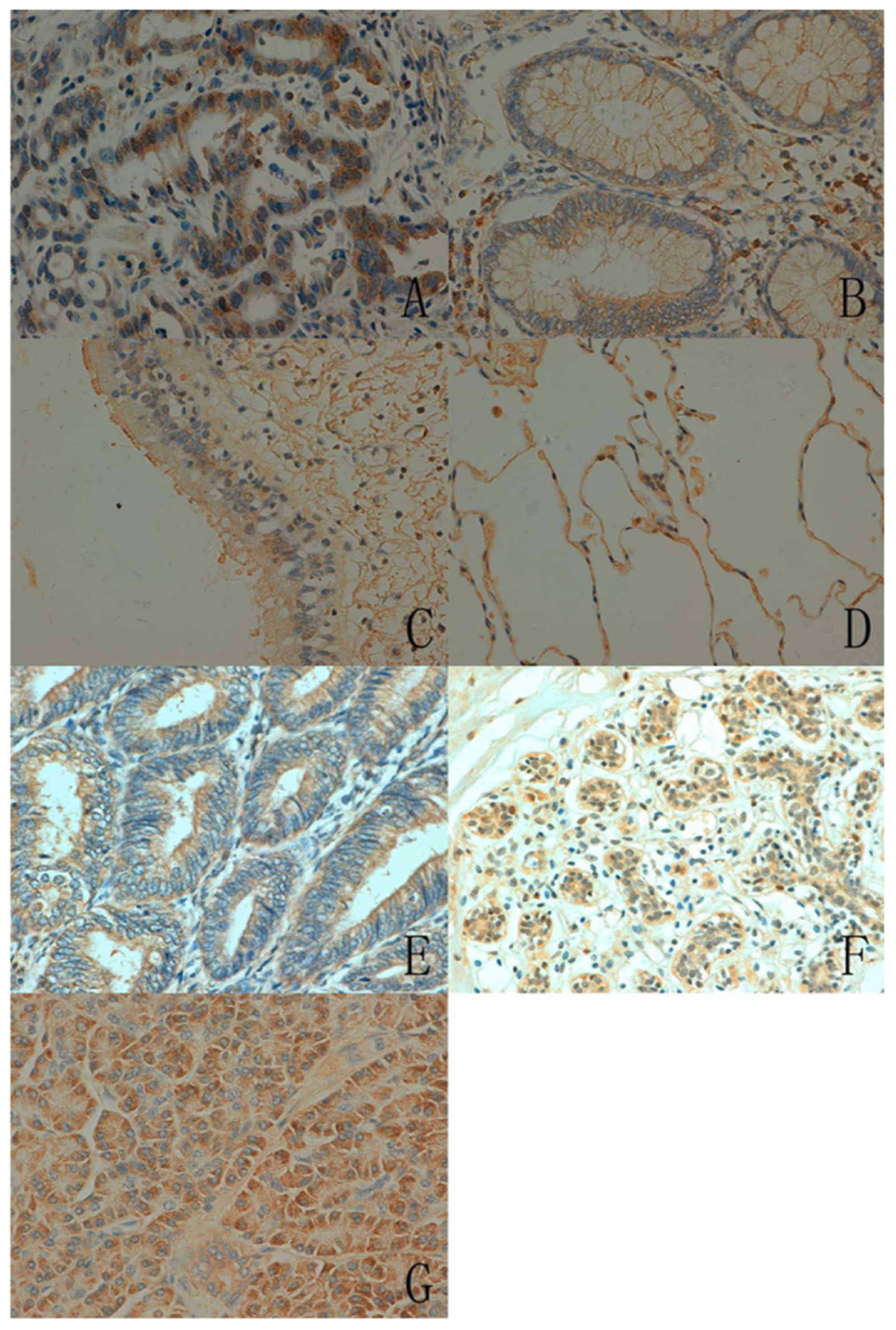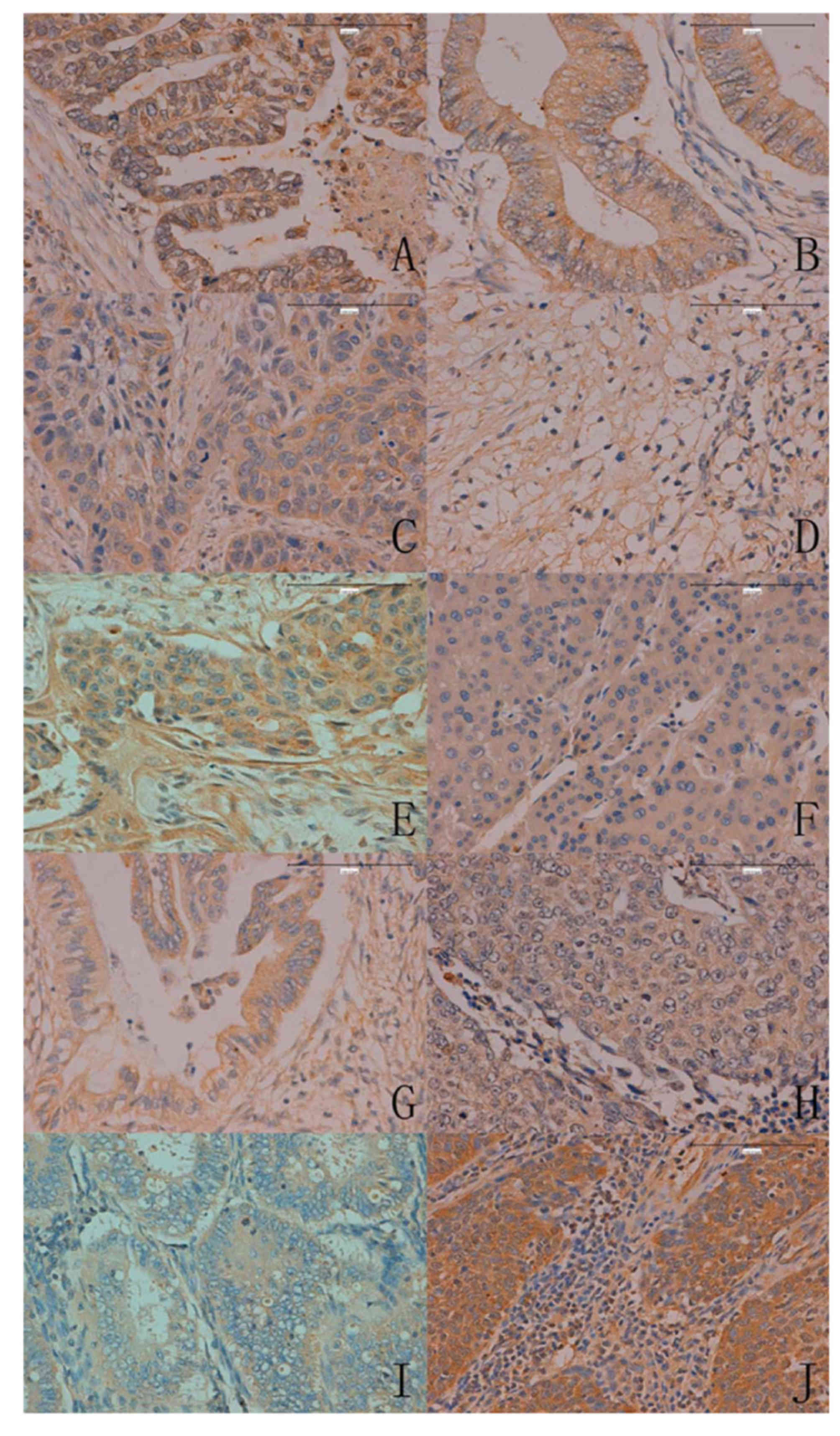|
1
|
Gunduz M, Gunduz E, Rivera RS and
Nagatsuka H: The inhibitor of growth (ING) gene family: Potential
role in cancer therapy. Curr Cancer Drug Targets. 8:275–284. 2008.
View Article : Google Scholar : PubMed/NCBI
|
|
2
|
Soliman MA and Riabowol K: After a decade
of study-ING, a PHD for a versatile family of proteins. Trends
Biochem Sci. 32:509–519. 2007. View Article : Google Scholar : PubMed/NCBI
|
|
3
|
Wang Y, Wang J and Li G: Leucine
zipper-like domain is required for tumor suppressor ING2-mediated
nucleotide excision repair and apoptosis. FEBS Lett. 580:3787–3793.
2006. View Article : Google Scholar : PubMed/NCBI
|
|
4
|
Unoki M, Kumamoto K, Takenoshita S and
Harris CC: Reviewing the current classification of inhibitor of
growth family proteins. Cancer Sci. 100:1173–1179. 2009. View Article : Google Scholar : PubMed/NCBI
|
|
5
|
Champagne KS, Saksouk N, Peña PV, Johnson
K, Ullah M, Yang XJ, Côté J and Kutateladze TG: The crystal
structure of the ING5 PHD finger in complex with an H3K4me3 histone
peptide. Proteins. 72:1371–1376. 2008. View Article : Google Scholar : PubMed/NCBI
|
|
6
|
Ullah M, Pelletier N, Xiao L, Zhao SP,
Wang K, Degerny C, Tahmasebi S, Cayrou C, Doyon Y, Goh SL, et al:
Molecular architecture of quartet MOZ/MORF histone
acetyltransferase complexes. Mol Cell Biol. 28:6828–6843. 2008.
View Article : Google Scholar : PubMed/NCBI
|
|
7
|
Liu M, Du Y, Gao J, Liu J, Kong X, Gong Y,
Li Z, Wu H and Chen H: Aberrant expression miR-196a is associated
with abnormal apoptosis, invasion and proliferation of pancreatic
cancer cells. Pancreas. 42:1169–1181. 2013. View Article : Google Scholar : PubMed/NCBI
|
|
8
|
Liu N, Wang J, Wang J, Wang R, Liu Z, Yu Y
and Lu H: ING5 is a Tip60 cofactor that acetylates p53 in response
to DNA damage. Cancer Res. 73:3749–3760. 2013. View Article : Google Scholar : PubMed/NCBI
|
|
9
|
Wang J, Huang W, Wu Y, Hou J, Nie Y, Gu H,
Li J, Hu S and Zhang H: MicroRNA-193 pro-proliferation effects for
bone mesenchymal stem cells after low-level laser irradiation
treatment through inhibitor of growth family, member 5. Stem Cells
Dev. 21:2508–2519. 2012. View Article : Google Scholar : PubMed/NCBI
|
|
10
|
Shiseki M, Nagashima M, Pedeux RM,
Kitahama-Shiseki M, Miura K, Okamura S, Onogi H, Higashimoto Y,
Appella E, Yokota J and Harris CC: p29ING4 and p28ING5 bind to p53
and p300 and enhance p53 activity. Cancer Res. 63:2373–2378.
2003.PubMed/NCBI
|
|
11
|
Cengiz B, Gunduz M, Nagatsuka H, Beder L,
Gunduz E, Tamamura R, Mahmut N, Fukushima K, Ali MA, Naomoto Y, et
al: Fine deletion mapping of chromosome 2q21-37 shows three
preferentially deleted regions in oral cancer. Oral Oncol.
43:241–247. 2007. View Article : Google Scholar : PubMed/NCBI
|
|
12
|
Cengiz B, Gunduz E, Gunduz M, Beder LB,
Tamamura R, Bagci C, Yamanaka N, Shimizu K and Nagatsuka H:
Tumor-specific mutation and downregulation of ING5 detected in oral
squamous cell carcinoma. Int J Cancer. 127:2088–2094. 2010.
View Article : Google Scholar : PubMed/NCBI
|
|
13
|
Qi L and Zhang Y: Truncation of inhibitor
of growth family protein 5 effectively induces senescence, but not
apoptosis in human tongue squamous cell carcinoma cell line. Tumour
Biol. 35:3139–3144. 2014. View Article : Google Scholar : PubMed/NCBI
|
|
14
|
Li X, Nishida T, Noguchi A, Zheng Y,
Takahashi H, Yang X, Masuda S and Takano Y: Decreased nuclear
expression and increased cytoplasmic expression of ING5 may be
linked to tumorigenesis and progression in human head and neck
squamous cell carcinoma. J Cancer Res Clin Oncol. 136:1573–1583.
2010. View Article : Google Scholar : PubMed/NCBI
|
|
15
|
Zheng HC, Xia P, Xu XY, Takahashi H and
Takano Y: The nuclear to cytoplasmic shift of ING5 protein during
colorectal carcinogenesis with their distinct links to pathologic
behaviors of carcinomas. Hum Pathol. 42:424–433. 2011. View Article : Google Scholar : PubMed/NCBI
|
|
16
|
Xing YN, Yang X, Xu XY, Zheng Y, Xu HM,
Takano Y and Zheng HC: The altered expression of ING5 protein is
involved in gastric carcinogenesis and subsequent progression. Hum
Pathol. 42:25–35. 2011. View Article : Google Scholar : PubMed/NCBI
|
|
17
|
Kumada T, Tsuneyama K, Hatta H, Ishizawa S
and Takano Y: Improved 1-h rapid immunostaining method using
intermittent microwave irradiation: Practicability based on 5 years
application in Toyama Medical and Pharmaceutical University
Hospital. Mod Pathol. 17:1141–1149. 2004. View Article : Google Scholar : PubMed/NCBI
|
|
18
|
https://www.ncbi.nlm.nih.gov/pmc/articles/PMC540017/#__sec22title
|
|
19
|
Shah S, Smith H, Feng X, Rancourt DE and
Riabowol K: ING function in apoptosis in diverse model systems.
Biochem Cell Bio. 87:117–125. 2009. View
Article : Google Scholar
|
|
20
|
Gong W, Russell M, Suzuki K and Riabowol
K: Subcellular targeting of p33ING1b by phosphorylation-dependent
14-3-3 binding regulates p21WAF1 expression. Mol Cell Biol.
26:2947–2954. 2006. View Article : Google Scholar : PubMed/NCBI
|
|
21
|
Yu L, Thakur S, Leong-Quong RY, Suzuki K,
Pang A, Bjorge JD, Riabowol K and Fujita DJ: Src regulates the
activity of the ING1 tumor suppressor. PLoS One. 8:e609432013.
View Article : Google Scholar : PubMed/NCBI
|
|
22
|
Chen G, Wang Y, Garate M, Zhou J and Li G:
The tumor suppressor ING3 is degraded by SCF (Skp2)-mediated
ubiquitin-proteasome system. Oncogene. 29:1498–1508. 2010.
View Article : Google Scholar : PubMed/NCBI
|













